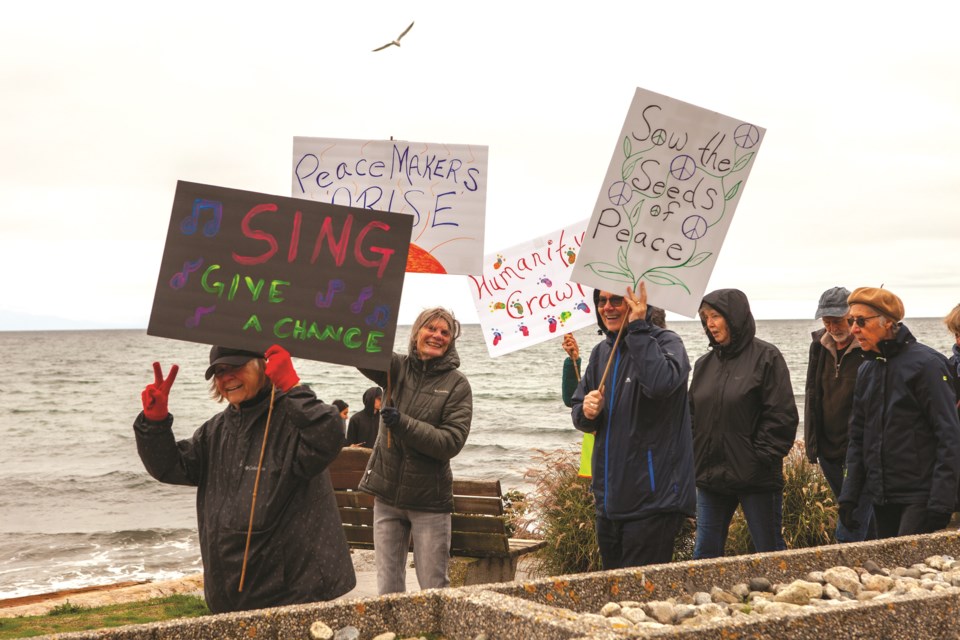A grassroots peace march attracted more than 60 people to the Davis Bay waterfront on Oct. 21 in response to this month’s violence in Israel and Gaza.
Organizer Katryn Harris had been scheduled to fly to Israel and Palestine on Oct. 10. Her mother, a retired minister, has been taking groups to the Middle East for years to encourage cross-cultural dialogue with Palestinian people.
“She’d be wanting me to go for years,” Harris said, “and this was the year I said okay, I’m ready.”
Three days before her flight departed, the militant group Hamas led a surprise attack on Israeli territory, triggering an armed conflict that has resulted in thousands of victims.
Harris noted that as of Saturday morning, 1,405 Israelis had been killed. An estimated 210 captives had been taken by Hamas, with a further 100 individuals missing. In Gaza, at least 4,385 people had been killed, almost a quarter of them children.
“Today is mostly about hope, but I think it’s also important that we’re rooted in reality,” said Harris. “What’s happening over there is very ugly. I think it’s important to talk about hope, but it’s also important to acknowledge the suffering.”
March participants arrived by car and bus from destinations across the Sunshine Coast, carrying handmade placards. Once assembled, the group trekked under cloudy skies from the Davis Bay pier to the courtyard of Living Faith Lutheran Church. Passing drivers slowed and honked in support.
“Peace will come and let it begin with me,” sang the marchers, led by Dianne Baker, a member of St. John’s United Church in Davis Bay. “My own life is all I can hope to control. Let my life be lived for the good of us all.”
Harris emphasized that she has no official position other than being motivated by deep concern about events in the Middle East. “The only positive response I can think of is to have a march for peace and human rights,” she wrote in an invitation that circulated through local social networks. “Not supporting or excusing either side but to speak up for all human rights.”
Glenn Inglis, pastor of Living Faith Lutheran Church, contributed to a lineup of speakers by reflecting on “home” as a core human value. Inglis provided a capsule history of Middle Eastern politics, from the homeward longing of diaspora Jews to the formation of the modern state of Israel in 1948 with its resultant scattering of Palestinians.
Inglis drew a link to Canada’s treatment of Indigenous people. “We as Canadians have no high horse to view the conflict in the world, or anywhere,” he added. “First Nations peoples in many parts of this country still long for their traditional homes. They long for justice with peace in the home, peace in the heart, peace in the land.”
Baker, who has worked as a peace activist in both Israel and Palestinian territories, taught marchers two songs.
The Hebrew Olam Chessed Yibaneh (Let Us Build This World in Love) was composed by Rabbi Menachem Creditor after the Sept. 11, 2001 attacks in New York City. The Arabic song Alhamdulillah expresses thanks for divine blessings. “You will hear that in the streets and the markets [of Palestine],” Baker said. “Praise to God that you are working this earth. And praise to God that so many of you showed up today to walk for peace.”



